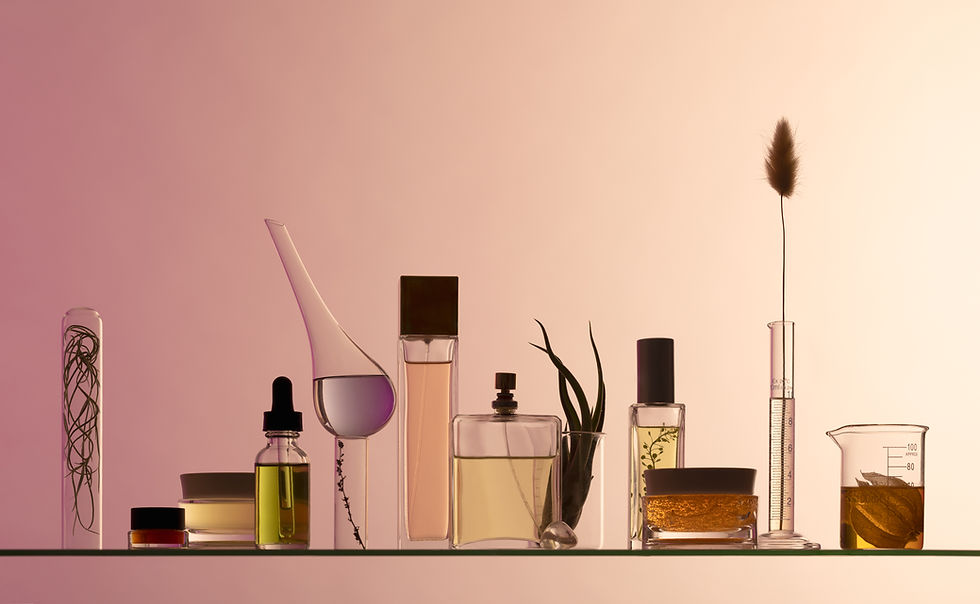
What is Clean Beauty?
By Lauren Mungo
A Review of the Gaps in the Current Food, Drug, and Cosmetics Act. Learn about the current regulations in the beauty industry and how they are lacking to protect consumer from harmful EDCs.
The Current Food, Drug and Cosmetics Act
When you go to the store to pick out a new foundation or blush and see that the ingredient list is filled with chemicals that you cannot pronounce, most people make the assumption that, although you do not know what exactly those chemicals are, the product is safe because how else would the product be allowed to be manufactured and sold. Surely, we think, our government pays close attention to products that we apply directly to our body every day.
Unfortunately, that assumption would be incorrect. While the Food and Drug Administration monitors the production of cosmetics, they do not heavily regulate what goes into them. In 1938 the Food, Drug, and Cosmetics Act was passed in order to provide a level of control over the safety and distribution of these commercialized products. The act requires that cosmetics not be “adulterated or misbranded” which means that cosmetics must be safe for their intended use and the labeling must not be falsified or fabricated in any way (1). It also requires companies to add a warning label to products that contain a chemical that could be potentially harmful if used in a manner other than its intended use, but not for chemicals that may be harmful even if used properly (1).
The FDA also does not require companies to submit their products for testing and safety evaluations before they are placed on the market, like they do with drugs (2). The private companies are responsible for safety testing, however, their testing is largely inadequate. They do not take into account the long-term effects of the chemicals used nor do they consider the safety of chemicals being mixed with one another (2). The only substance within cosmetics that the FDA does require brands to submit to for prior approval is color additives (1).
Therefore, harmful chemicals such as Endocrine Disrupting Chemicals (EDCs) are continuously present within cosmetic products. Some individuals have recognized this lack of proper legislation to protect consumers and have coined the term “clean beauty” to indicate products with safer ingredients. The only problem with this term is that it is also not regulated meaning many companies can use the term “clean” or synonyms such as “natural” in describing their products even if it contains harmful chemicals as there is no proper legislative definition or guidelines to clean beauty (2).
Due to the lack of regulation, it can be difficult to know if the products you are using are safe. Cosmetic products are used daily by many individuals, making it important that consumers are able to purchase safe and reliable products. Nonetheless, the burden is currently on the consumer to research common ingredients and harmful chemicals in order to avoid purchasing them. While pregnant, it may be daunting to consider how dangerous some of the everyday products you are using may be to both you and your child. There are two ways to help ensure the safety of your products:
-
Use this website to find safe personal care products:
-
The Environmental Working Group (EWG) has created their own verification for safe personal care products free of chemicals that are currently banned in other countries. For more information about their verification process please visit their website.
-
-
Help enact change on the state and federal level by encouraging more legislation on cosmetic products.

Contact your representative about these pieces of Clean Beauty legislation:
The Toxic Beauty Act of 2021 aims to ban eleven of the most harmful chemicals that are present in our beauty products today. Many of these chemicals are already banned in other parts of the world. Among these chemicals are EDCs such as perfluoroalkyl and polyfluoroalkyl substances.
The Cosmetic Fragrance and Flavor Right to Know Act of 2021 would require companies to disclose harmful ingredients in their products listed as fragrance or flavoring. The act would require 21 chemicals which have been deemed unsafe in other countries to be disclosed on cosmetic packaging.
For more information regarding these acts please see the following sources:
The Toxic Beauty Act of 2021
-
Digital record of the bill: https://www.congress.gov/bill/117th-congress/house-bill/5537/text
-
Explanation: https://www.bcpp.org/resource/toxic-free-beauty-act-of-2021/
The Cosmetic Fragrance and Flavor Right to Know Act of 2021
